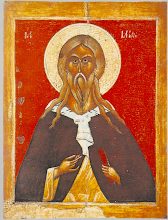The words of the Angel of Fatima, “Console your God”, engraved themselves in young Francisco’s heart. They became the compelling inspiration of his short life of eleven years (1908–1919). Francisco wanted, more than anything else, to be the Consoler of the Hidden Jesus. He did this by praying rosary after rosary, and by spending hours close to the tabernacle of the parish church.
Readers familiar with the story of Fatima will recall that on 13 May 1917, after hearing the Lady say, “I come from heaven”, Lucia asked if she and her little companions would go to heaven. The Lady replied that both Lucia and Jacinta would go to heaven , but that Francisco would need to say many rosaries first.
This enigmatic utterance concerning Francisco has, over the years, given rise to a certain amount of speculation as to its meaning. Various interpretations have been ascribed to it, but I found none of them satisfying. Some commentators even suggested that Francisco was somehow held back in his spiritual development and, therefore, needed more prayer than his sister Jacinta and his cousin Lucia. (Read more.)
Tuesday, October 27, 2015
Blessed Francisco Marto
From Fr. Mark:
Sunday, October 25, 2015
Praying the Rosary
From Fr. Mark:
In a not so distant past, when the Rosary was prayed aloud, the individual leading the prayers would, invariably, do so while kneeling at a prie–dieu facing the image of the Blessed Virgin Mary. All were united in turning to the representation of Our Lady’s presence. The shift from the prie–dieu to the ambo, and the change in direction, has brought about and continues to foster an altogether unsettling development in the public recitation of the Rosary, analogous to what happens when the Holy Sacrifice of the Mass is celebrated at a forward–facing altar. Inevitably, the Rosary takes on a didactic character, in contrast to the contemplative, supplicatory, and doxological movement that has always been its very soul.
During my pilgrimage I could not help but notice the inflation of a verbose didactic approach to the Rosary. Each decade of the Rosary became an opportunity for someone to hold forth about something. These were not mere meditations on the mysteries but, rather, moralising and exhortatory fervorini stitched together with all the fashionable pastoral buzz words. My sense was that people would have preferred to get on with their prayers, and found all this holding forth wearisome. (Read more.)
Thursday, October 1, 2015
The Passion of Saint Thérèse
In June of 1895, two years before her death, St. Thérèse of the Child Jesus and the Holy Face made an "Act of Oblation to Merciful Love." She expressed her gratitude to God for the grace of suffering: "Since you deigned to give me a share in this very precious Cross, I hope in heaven to resemble You and to see shining in my glorified body the sacred stigmata of Your Passion." (The Story of a Soul, trans. by Fr. John Clarke, OCD, p.277)
In the mental and physical sufferings that St. Thérèse experienced in the weeks preceding her early demise, she came to resemble her Crucified Spouse very much. As the tuberculosis consumed her body, a trial of faith and hope, in which heaven and eternity seemed closed to her, tortured her soul. The coughing of blood and persistent sore throat led to a treatment of painful cauterization with silver nitrate. Eventually, "gangrene ate away her intestines and she lost blood two or three times a day. Drinking only intensified her burning thirst. She had a terrible feeling of suffocation which could not be eliminated by the administration of ether. Finally, her bones protruded through her flesh to such an extent that, when she was made to sit upright to get some relief, it seemed to her that she was seated on iron spikes." (Complete Spiritual Doctrine of St. Therese of Lisieux by Rev. Francois Jamart, pp. 187-188) She confided to her sister, Mother Agnes of Jesus, that her pain was so intense that at times she was tempted to commit suicide: "What a grace it is to have faith! If I had no faith I would have inflicted death on myself without hesitating a moment!" (The Story of a Soul, p. 264)
On the afternoon of September 30, 1897, she entered into her agony. "Everything I have written about my desires for suffering," she gasped. "Oh, it is true just the same. I am not sorry for having surrendered myself to love. Oh, I am not sorry, on the contrary!" (The Story of a Life by Bishop Guy Gaucher, p. 204)
Nevertheless, Mother Agnes was so distressed by her sister's ordeal that she knelt before a statue of the Sacred Heart and begged for the grace of final perseverance for her little Thérèse. When the other nuns of the Carmel were summoned to the infirmary to support their sister with prayers in her dying moments, they saw her purplish hands holding her profession crucifix. Shortly after seven o'clock in the evening, the saint looked at the crucifix and breathed forth her last words: "My God, I love You!" After gazing a few moments with an expression of ecstatic joy at the statue of Our Lady, the beloved "Virgin of the Smile," brought from her childhood home, she died peacefully, her own face transfigured and smiling. On October 4, she was buried in the cemetery of the town of Lisieux. Only a few relatives and friends were present at the burial of the twenty-four year old nun. No one guessed that a storm of glory, a shower of miracles, was about to break forth.
Subscribe to:
Comments (Atom)




















